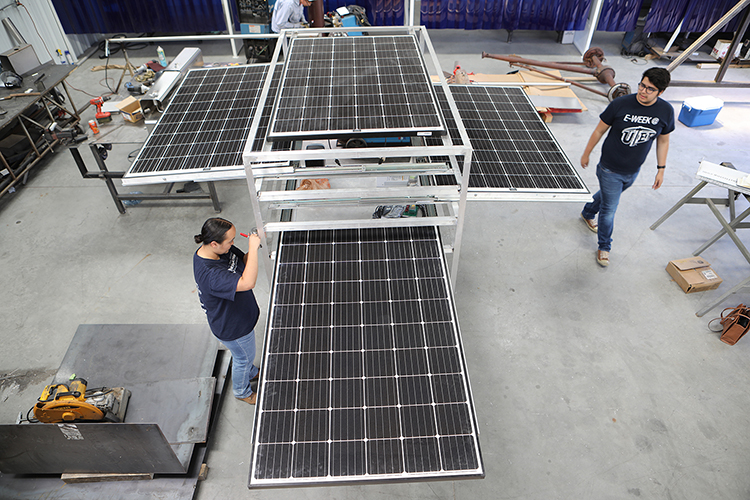UTEP Civil Engineering Professor Unveils Portable Charging Station Designed to Help Hurricane Victims
Last Updated on August 27, 2019 at 12:00 AM
Originally published August 27, 2019
By UC Staff
UTEP Communications
Ivonne Santiago, Ph.D., clinical professor of civil engineering at The University of Texas at El Paso, has continually sought ways to help her home state of Puerto Rico since Hurricane Maria barreled through the Caribbean in September 2017. Her latest effort was showcased on the UTEP campus this week.

Santiago unveiled a completed portable charging station at noon Tuesday, Aug. 27, 2019, in the pedestrian area of Hawthorne Street between the Administration and Liberal Arts buildings. The campus community was invited to view the work, which is the result of a service project conducted by students after they visited the island in 2018 and viewed the lingering effects of the Category 4 storm.
The project — which Santiago’s team dubbed the “portable charging oasis” — is an enclosed 7-by-4-foot wheeled aluminum boxed frame that stands about 6 feet high. When in operation, four solar panels fan out from the cube on slide tracks to power its batteries, which provide 1,500 watts of power to four AC outlets and four USB ports along with a refrigerator.
“The idea is we want to provide a power source to areas in Puerto Rico that still struggle without electricity,” Santiago said. “This is a lightweight, sustainable option that can serve those areas and provide power to people who need it.”
Santiago said students have played an integral role in the development of the oasis. One of those is Arahin Zuñiga. The master’s student in environmental science said he got involved in the project as a way to gain experience in a real-world engineering project. More than that, it was a way to help people afflicted by a natural disaster.
“Part of being an engineer is helping people,” Zuñiga said. “I think this project is going to do that.”
That generous spirit is something that has aided the project as well, Santiago said. Construction of the oasis took place at an automobile modification garage in the Upper Valley and involved volunteer work from UTEP alumni who work in the private sector.
“We are grateful for the support we have received from the community,” Santiago said. “This project will eventually help the people of Puerto Rico. But the generosity of the community is helping our students grow and engage in meaningful work that is the essence of our campus’ access and excellence mission.”
Santiago eventually wants to ship the oasis to the University of Puerto Rico at Humacao. She hopes its presence on campus will continue to draw support for the work of her students. If the oasis proves successful, Santiago said efforts to replicate it for use in other areas will commence immediately.